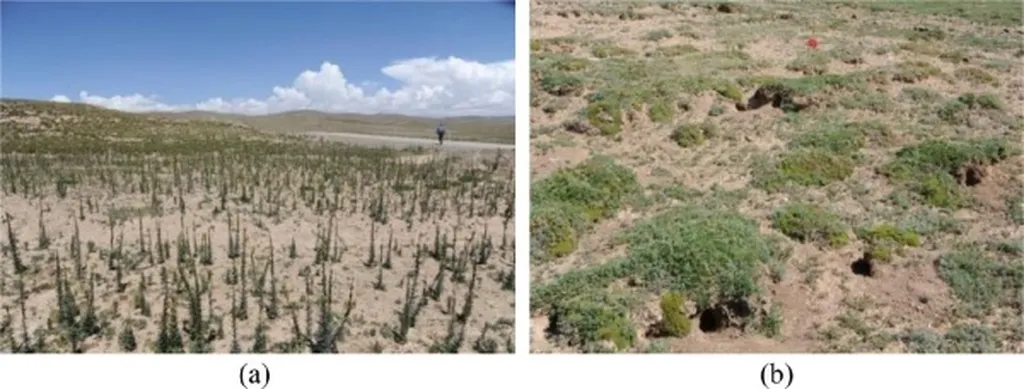In the heart of China’s Dashanbao National Nature Reserve, a groundbreaking study led by Yong Zhang from the Yunnan Key Laboratory of Plateau Wetland Conservation, Restoration and Ecological Services at Southwest Forestry University is reshaping our understanding of grassland degradation. The research, published in the journal *Frontiers in Plant Science* (translated to English as “Plant Science Frontiers”), introduces a novel method to assess grassland health, offering a non-empirical approach that could revolutionize how we diagnose and address degradation in these vital ecosystems.
Grasslands, often overlooked in favor of their more glamorous forest counterparts, play a crucial role in carbon sequestration, biodiversity conservation, and water regulation. Yet, degradation of these ecosystems has been a persistent challenge, with current diagnostic methods yielding inconsistent results. Zhang and his team aimed to change that by developing a geo-coding and abrupt analysis based (GAAB) method to identify degradation conditions with unprecedented accuracy.
The GAAB method hinges on the living status of vegetation (LSV), a comprehensive indicator that combines cover, height, aboveground biomass, species richness, and the Pielou index of the plant community. By constructing a rule system to identify abrupt changes in LSV, the researchers could pinpoint the thresholds of grassland degradation. “This method allows us to move beyond traditional empirical approaches and provide a more objective assessment of grassland health,” Zhang explains.
The study revealed that the subalpine meadows in the Dashanbao National Nature Reserve could be classified into four relative degradation levels: healthy, light degradation (LD), moderate degradation (MD), and severe degradation (SD). The findings showed a linear decline in plant community appearance—cover, height, and aboveground biomass—across the degradation gradient. However, species diversity followed the theory of moderate interference, with species richness and the Pielou index peaking at the MD level. “This counterintuitive finding highlights the complexity of grassland ecosystems and the need for nuanced approaches to their management,” Zhang notes.
The implications of this research extend far beyond the boundaries of the Dashanbao National Nature Reserve. For the energy sector, understanding and mitigating grassland degradation is crucial. Healthy grasslands can enhance carbon sequestration, a vital service in the fight against climate change. Moreover, degraded grasslands can lead to soil erosion and reduced water quality, impacting the viability of energy projects that rely on stable environmental conditions.
The GAAB method offers a promising tool for energy companies and conservationists alike. By providing a clear, objective assessment of grassland health, it can guide restoration efforts and inform land-use decisions. “This research is a significant step forward in our ability to diagnose and address grassland degradation,” Zhang says. “It offers a non-empirical approach that can enhance our understanding of these complex ecosystems and support more effective management strategies.”
As the world grapples with the challenges of climate change and environmental degradation, innovative research like Zhang’s provides a beacon of hope. By offering a clearer picture of grassland health, the GAAB method could shape the future of conservation efforts and energy sector practices, ensuring that these vital ecosystems continue to thrive for generations to come.

